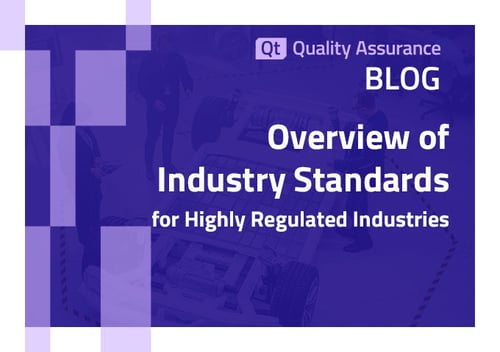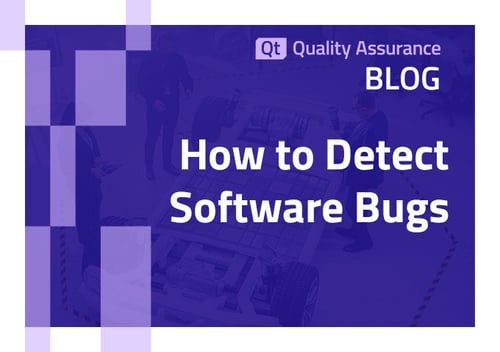In the current digital era, safeguarding your software against cybersecurity threats is paramount. Understanding the implications of the Cybersecurity Executive Order is essential for any organization. It describes the measures and requirements that companies must follow to improve their software security and protect sensitive data. In this blog, we provide a comprehensive summary of the executive order and explain its significance for your business. We will also provide guidance on how to prepare your software for compliance and ensure you stay ahead of evolving cybersecurity threats. Let's delve into the best practices for getting your software ready.
Understanding the Cybersecurity Executive Order
The Cybersecurity Executive Order is a key document outlining the U.S. government's strategies to strengthen the security of the nation's digital infrastructure. Knowing the key points and implications of this order will help software developers better understand the requirements and take the necessary actions to ensure their software is compliant with the new standards.
Signed by the President of the United States, the Executive Order on Improving the Nation's Cybersecurity, also known as EO 14028, aims to strengthen the nation‘s cybersecurity and defend against cyberthreats. The order recognizes the increasing frequency and sophistication of cyberattacks and emphasizes the need for improved security practices across government agencies, businesses, and individuals.
A primary objective of the EO 14028 is to improve software supply chain security. This entails promoting secure software development practices, assessing the security of software used by federal agencies, and establishing baseline security standards for software sold to the government.
A critical component of this effort is the use of Software Bills of Materials (SBOMs), which are detailed inventories of all components and dependencies within a software product. SBOMs provide transparency and enable organizations to identify and mitigate risks associated with third-party components, such as vulnerabilities and outdated libraries.
The impact on software development and security is significant. Developers must prioritize security throughout the software development lifecycle (SDL) by incorporating secure coding practices, conducting regular vulnerability scans, and ensuring the secure deployment and maintenance of software.
Organizations within the software supply chain will also face heightened scrutiny. They must adhere to the new security standards and be transparent about their software development processes, including third-party components and dependencies, as documented in SBOMs.
It is crucial for software developers to familiarize themselves with the specifics of the Cybersecurity Executive Order and understand how it may impact their software development practices. By staying informed and proactive, developers can ensure their software meets necessary security requirements, reduces vulnerabilities, and contributes to overall cybersecurity efforts.
Preparing Your Software for Compliance
Meeting the necessary requirements is critical for ensuring compliance with the cybersecurity executive order. Preparing your software involves:
1. Identifying potential vulnerabilities and risks:- Conduct a thorough assessment involving
- security audits
- vulnerability scanning
- penetration testing to identify potential entry points for attackers
- strong authentication (multi-factor authentication)
- access control mechanisms
- encrypting sensitive data
- regularly updating software and systems
- conducting employee training on cybersecurity awareness
3. Ensuring software supply chain security:
- assess and manage security risks associated with third-party software components and service
- establish a robust process to evaluate the security practices of your vendors, ensure they meet necessary security standard
📝Remember that compliance is an ongoing process, requiring continuous monitoring and updating of your software's security measures to stay ahead of emerging threats.
Complying with the Executive Order
Complying with the cybersecurity executive order is essential for organizations to secure their software and protect sensitive data. This section outlines steps to achieve compliance, the importance of collaborating with government agencies and stakeholders, and how to maintain ongoing compliance.
To achieve compliance, organizations need to conduct a comprehensive assessment of their current software infrastructure and identify vulnerabilities or weaknesses. This assessment helps understand the specific requirements needed to enhance software security.
After identifying vulnerabilities, prioritize remediation efforts based on the risk level associated with each vulnerability. Implement necessary security controls, such as encryption, access controls, and multi-factor authentication, to mitigate potential cyber risks.
Collaboration with government agencies and stakeholders is vital. Establish open lines of communication with relevant agencies to gain insights into the latest threat intelligence and best practices. Collaborate with stakeholders like cybersecurity experts and industry associations for valuable guidance and support in meeting compliance requirements.
Maintaining ongoing compliance is a continuous process requiring regular monitoring and adaptation. Regularly review software security measures and update them to address emerging threats and vulnerabilities. Stay informed about any changes or updates to the EO 14028 and adjust compliance efforts accordingly.
Enforcing Cybersecurity Executive Order Compliance with Axivion Static Code Analysis
The cybersecurity executive order demands secure, high-quality software built on robust foundations. Early and consistent verification in the SDLC (Software Development Lifecycle) is essential for compliance.
How Axivion Static Code Analysis can help
- Proactive Vulnerability Detection: Identifies weaknesses early and automates verification, ensuring consistent and repeatable results.
- Coding Standards Enforcement: Ensures adherence to standards like SEI Cert Secure Coding or MISRA, as well as other security policies, reducing risks and improving code quality.
- Metrics for Assurance: Provides software metrics to evaluate code complexity or refactoring needs and demonstrate compliance readiness.
- Focus on Critical Issues: Axivion's delta analysis helps teams decide which focus to set.
Integrating Axivion into your workflows, can help your organization meet the executive order's security requirements, minimize risks, and develop and deliver dependable software.
More Information
Browse our website to learn how Axivion can help you comply with the EO 14028 and many more coding guidelines and industry standards, find out how we stop software erosion and automatically analyse your software architecture with our comprehensive toolsuite.
Contact us to request a demo or speak to one of our experts about your needs. We provide you with a powerful solution.


